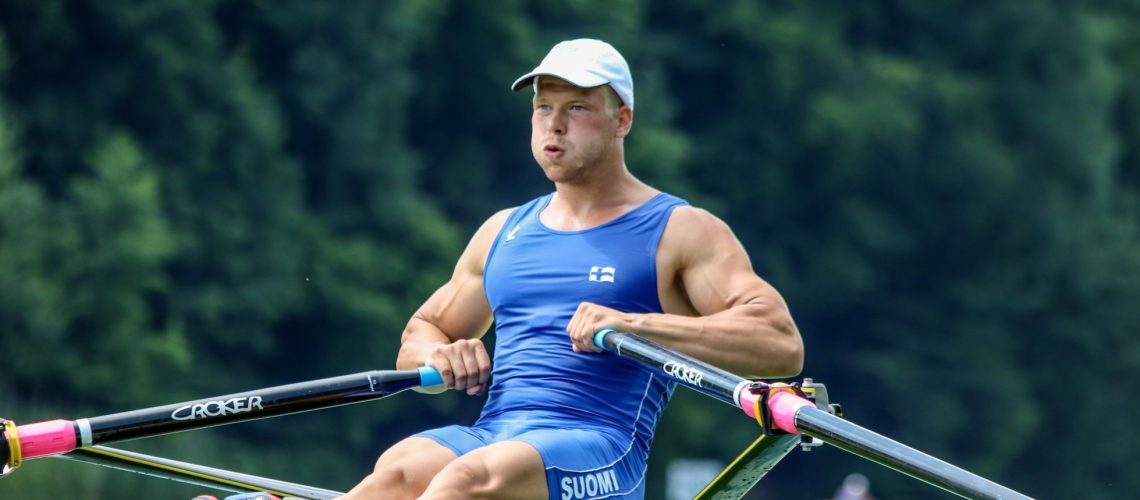In this post, we’ll pivot from discussing my data to delving into the heart rate variability (HRV) insights of Joel Naukkarinen, a professional athlete also known as The Rowing Finn.
This will be a two-part series, first focusing on the overview of Joel’s HRV data and then discussing protocols and experiments to increase HRV.
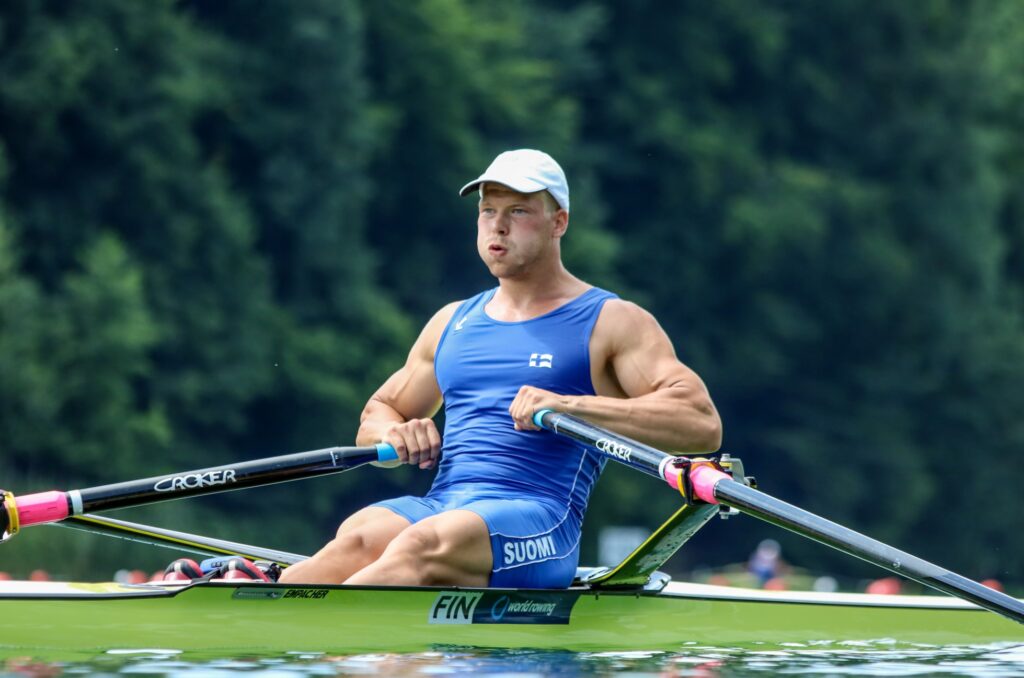
With an elite level of VO2 max (slightly below 7,0 l/min for heavyweight), Joel has captured multiple world championships in indoor rowing and holds nine standing world records. In 2022, Naukkarinen won Finland’s first Coastal Rowing World Championships medal.
The following areas of Joel’s HRV data will be discussed in this post:
· HRV at the yearly level
· HRV at the monthly level
· Winter’s effect on HRV
· High HRV = not always good?
The second part of the series will feature:
· Daytime HRV measurements
· Strategies for higher HRV
· Wintertime protocols to optimize recovery and performance
Generally speaking, professional athletes tend to have a higher HRV compared to healthy but non-athletic controls, as seen in this study [1]:

Higher training intensities and frequencies will likely improve HRV due to the athlete’s adapted physiology [2].
1. The Rowing Finn's HRV at the yearly level
Let’s start with the big picture. Joel began to use Oura ring in late 2020, so we have around 3 years of HRV data with this device:
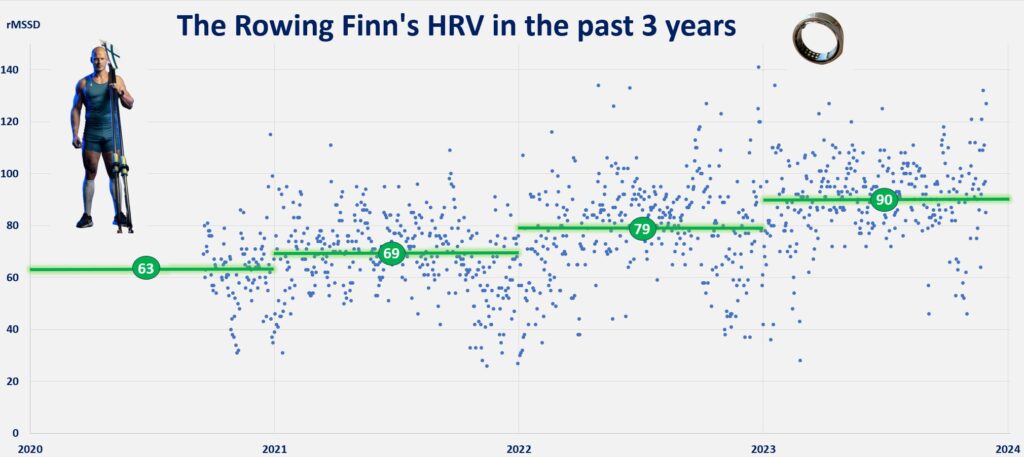
With two full years and 2023 almost complete, we see an impressive upward trend on HRV.
Compared to the whole Oura population [3], we can see that Joel’s HRV is significantly higher in his age group, and the overall trend is the opposite of an average user:
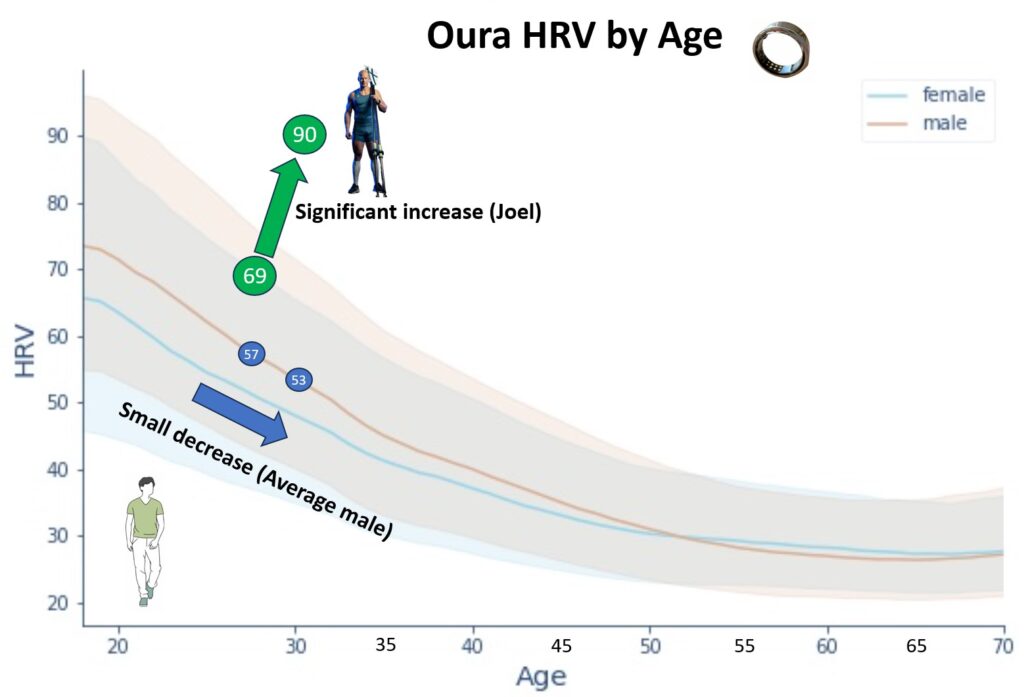
2. The Rowing Finn's HRV in the monthly level
The difference in temperature and sunlight between summer and winter in Finland is remarkable. This should be considered with HRV, as HRV indexes tend to be lower in winter [4].
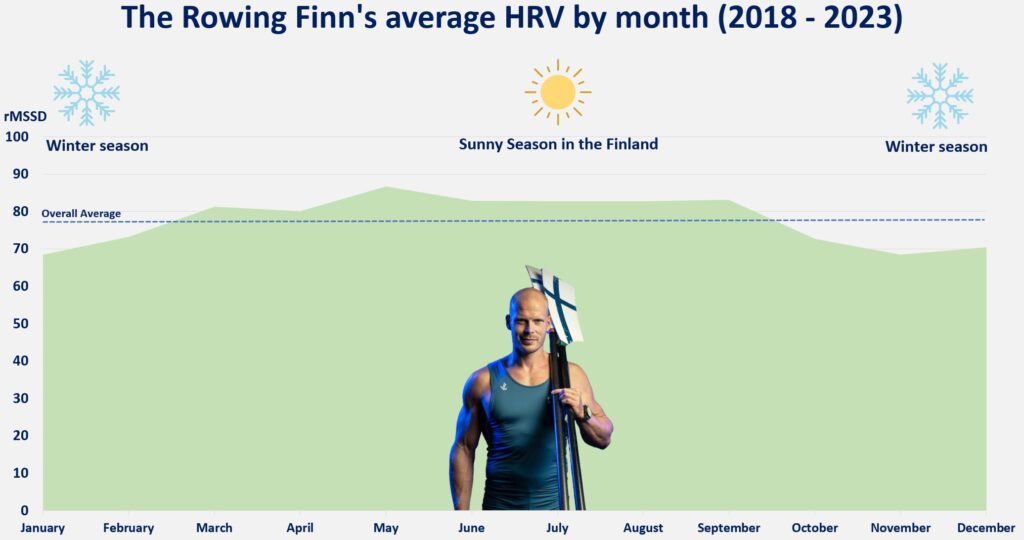
This prompts an important question.
Are winter-specific protocols beneficial to optimize recovery and performance?
This question is not only relevant for The Rowing Finn but all the Finns, as the darkness of winter can cause symptoms like lack of energy, hypersomnia, overeating, and depression [5].
Joel is constantly experimenting, studying, and seeking different protocols to optimize his performance as an athlete and PhD researcher (ongoing doctoral thesis: “Neuronal mechanisms and neuromodulation of fatigue and endurance”).
With new protocols implemented in 2023, there was a significant increase in HRV during November and the beginning of December, which has been the lowest HRV month typically for Joel:
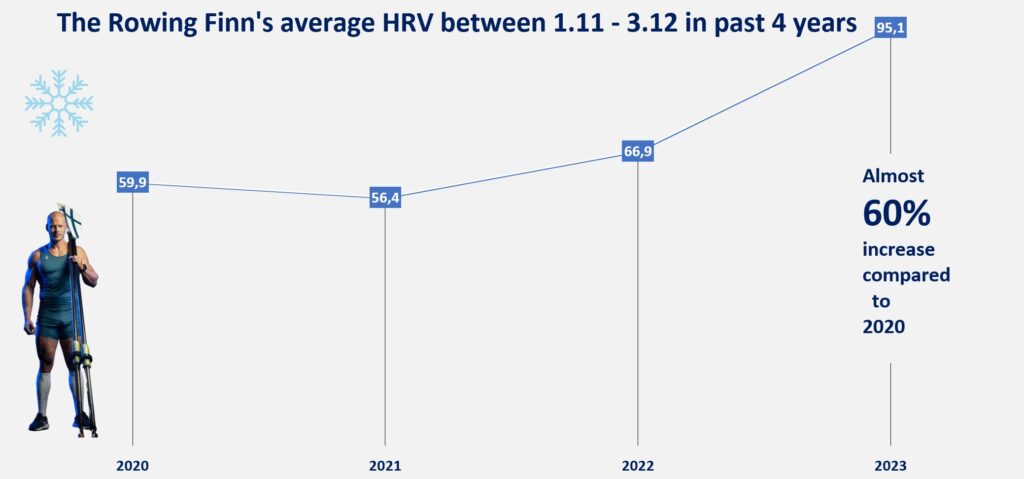
Joel’s training performance and subjective metrics were positively aligned with the increased HRV, which indicated that the new protocol is working.
3. High HRV = Always good?
”Hyper recovery” is used as a common term to explain exceptionally high HRV value (compared to a person’s baseline), although the term is not used in scientific literature.
With hyperrecovery, a person can feel tired, unmotivated, and lethargic.
Elite athletes are not immune to this, as we see in Joel’s example here:
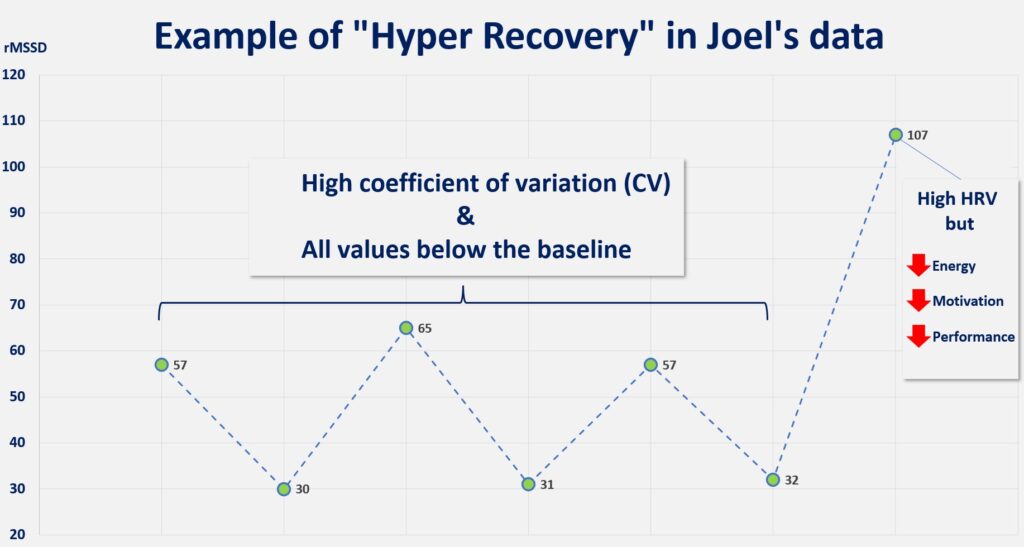
In this case, high coefficient of variation indicates poor adaption to training followed by hyper recovery (high HRV).
On the other hand, A low coefficient of variation indicates successful training adaptations and quick cardiac autonomic recovery [6].
4. Key takeaways
-> Elite level athletes tend to have higher HRV, this was also the case with Joel (Still, it’s important to remember the genetic factor on HRV) (7)
-> Joel’s average yearly HRV has an impressive upward trend. This will be focused on the next post
->Winter season is associated with lower HRV values. What are Joel’s protocols to mitigate this in 2023? Is there something that the ”average Joe” like me can copy?
-> High HRV is not always optimal, context and nuances matter when interpreting HRV values.
Who we are?
PeakHealth Innovations is a collaborative project between me and professional athlete and Medical Doctor Joel Naukkarinen, in which we search for methods and products from around the world that improve people’s everyday well-being and enhance athletes’ performance.

